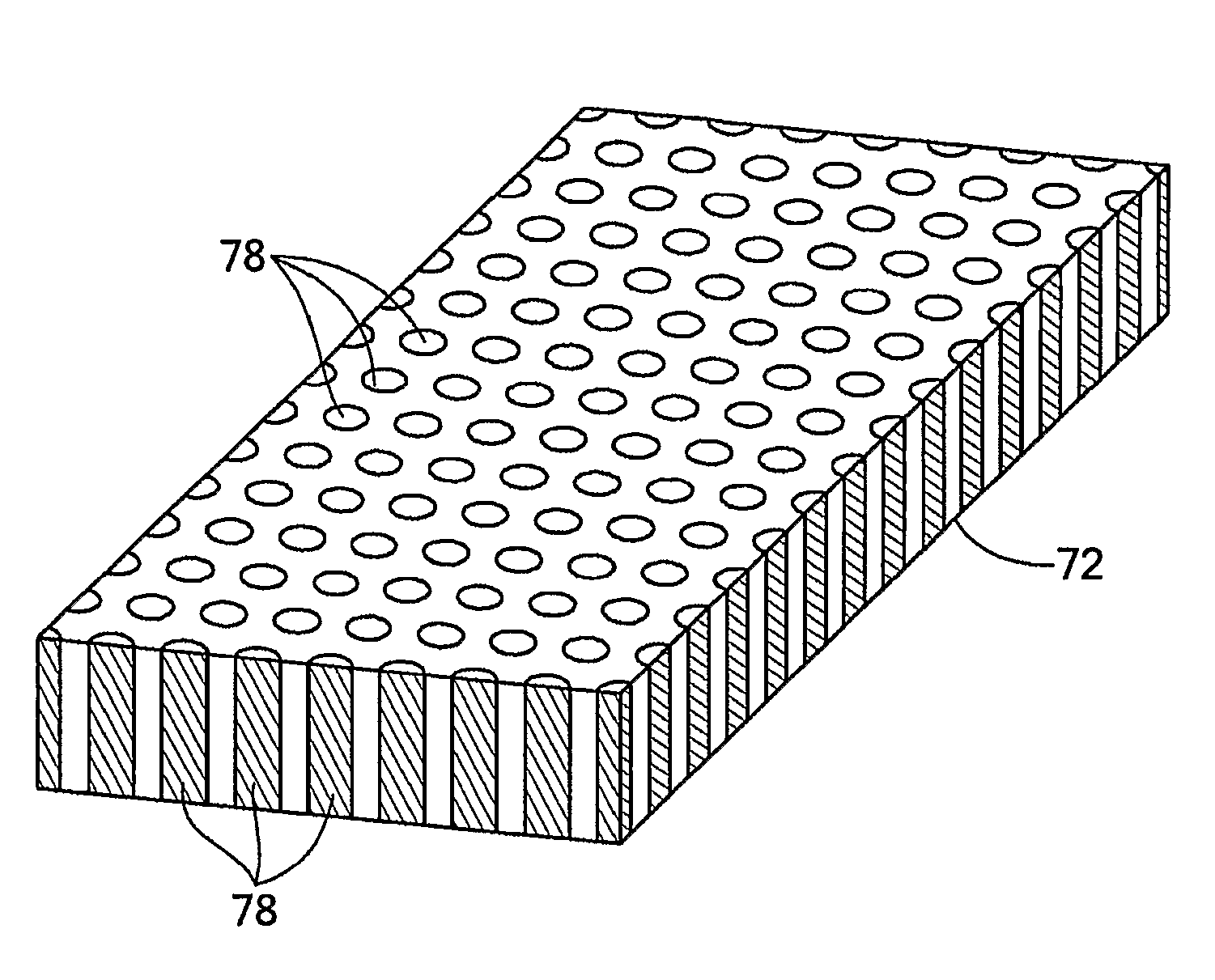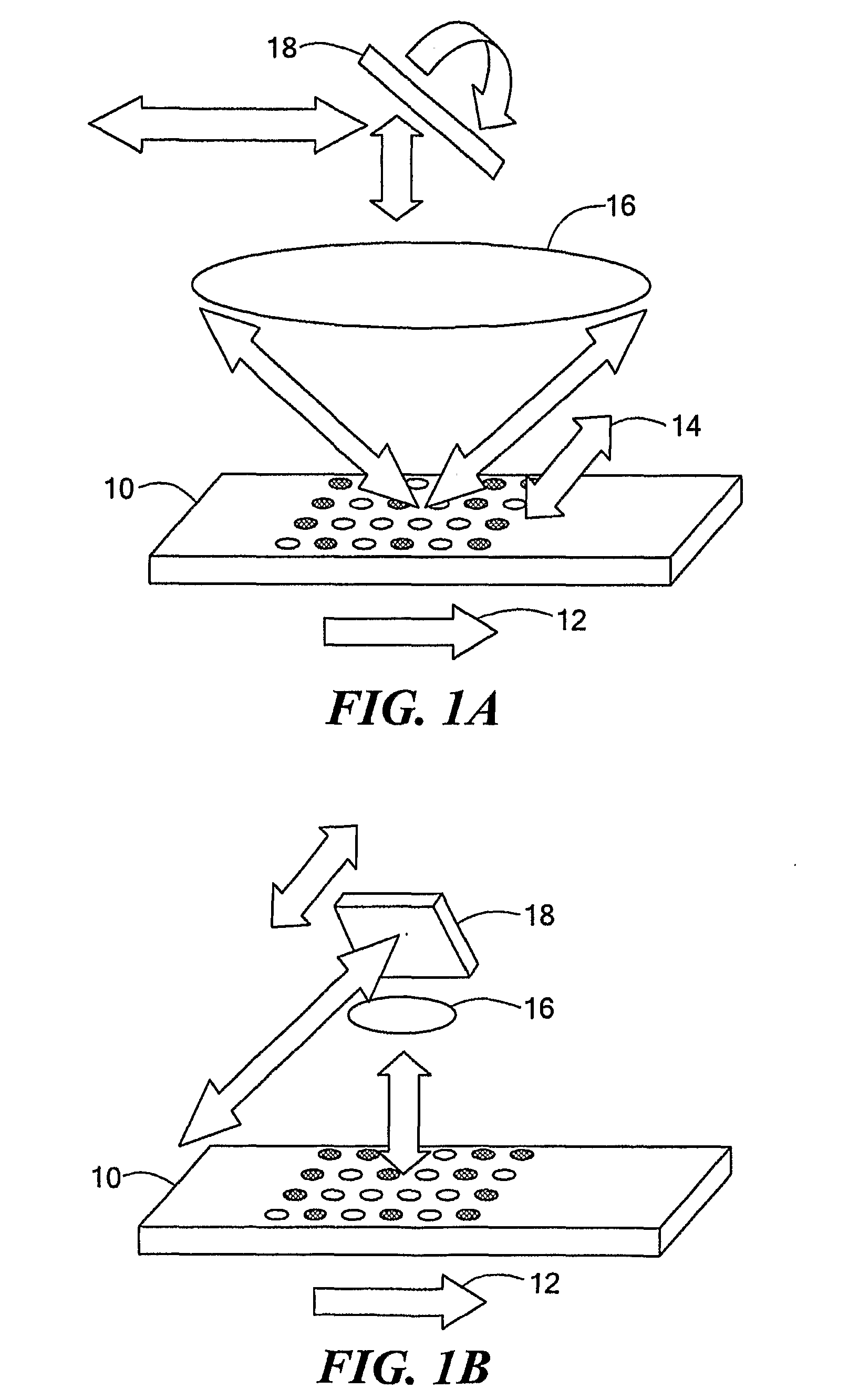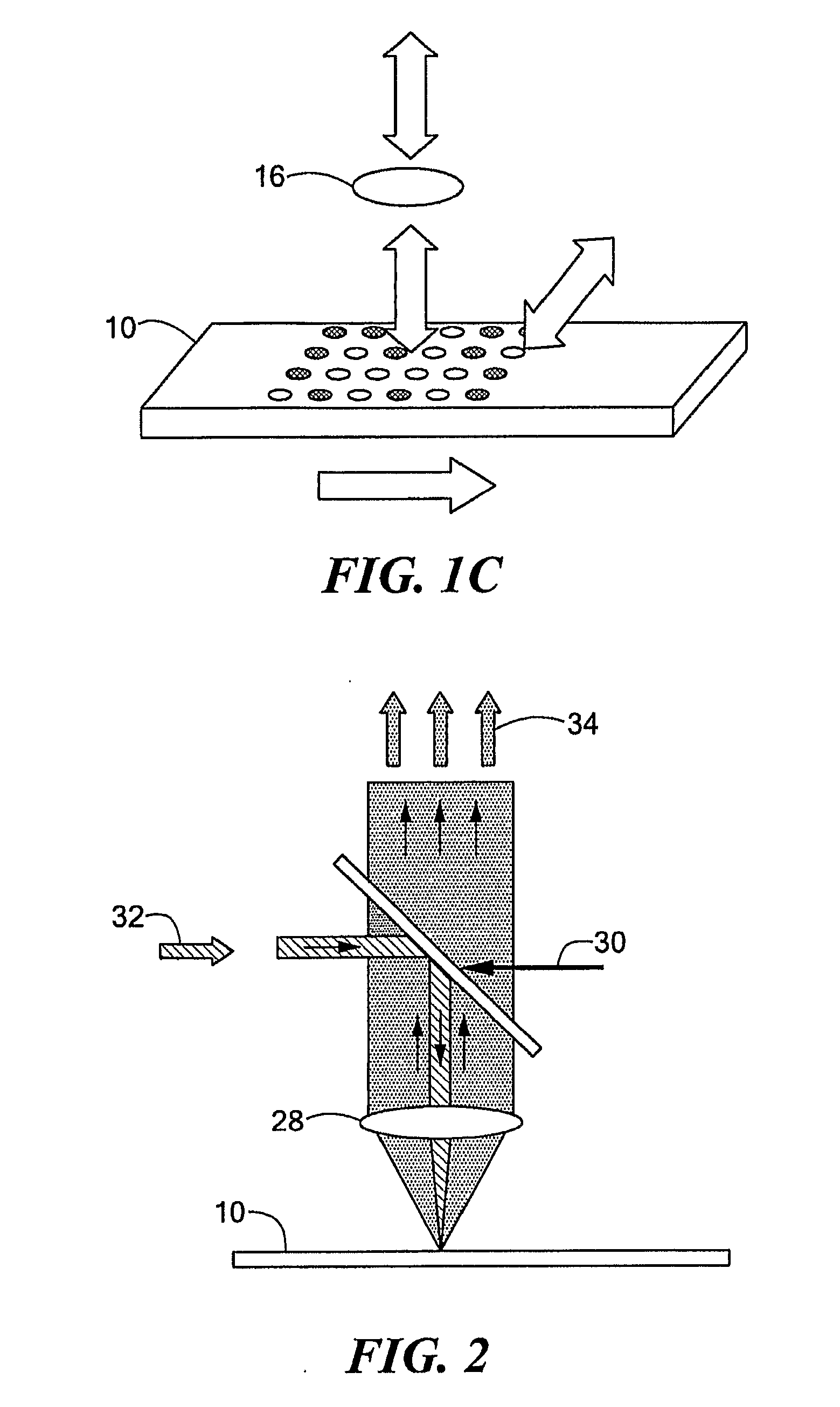Fiber Optic Interrogated Microslide, Microslide Kits and Uses Thereof
a fiber optic interrogation and microslide technology, applied in the field of fiber optic interrogation microslide, can solve the problems of difficult poor image quality, and difficulty in focusing through the thickness of the glass microscope slid
- Summary
- Abstract
- Description
- Claims
- Application Information
AI Technical Summary
Benefits of technology
Problems solved by technology
Method used
Image
Examples
example i
Microarray Analysis of Proteins
[0227]In this example, immunoglobulin (antibody) samples are analyzed for their binding affinity to a fluorescently labeled antigen. First, the immunoglobulin samples are diluted into a printing buffer at 0.1-0.5 μg / μl. Then, immunoglobulin samples are printed as a microarray onto an epoxy treated microslide using a split pen printing device. A blocking solution is then used to neutralize unreacted epoxy groups on the surface of the microslide. The processed microarrays are reacted with a solution containing a fluorescent labeled antigen, and allowed to incubate to achieve binding equilibrium. The microarray is then washed to remove unreacted fluorescent material. The microarray is imaged by placing it directly onto the faceplate of a CCD camera to produce an image of fluorescence on the microarray. The fluorescence data are then analyzed to evaluate the relative binding affinity of the immunoglobulins in the microarray for the antigen.
example ii
Microarray Analysis of DNA
[0228]This example illustrates the use of a microarray formed on a microslide of the invention to sequence a genomic DNA from a bacterium. A series of DNA samples containing fragments representative of the genomic DNA of a bacterium are diluted into a spotting solution. The DNA samples are printed as a microarray on the epoxy coated surface of a microslide substrate. Unreacted epoxy groups are blocked. The fluorescently labeled sample of bacterial genomic DNA for sequence analysis is hybridized to the samples in the microarray. Unbound label is washed away. The microslide is scanned in a laser scanning microarray reader, and the fluorescence at each spot in the microarray is determined, thereby allowing the determination of the nucleotide sequence of the sample to be determined in a computer.
PUM
 Login to View More
Login to View More Abstract
Description
Claims
Application Information
 Login to View More
Login to View More - R&D
- Intellectual Property
- Life Sciences
- Materials
- Tech Scout
- Unparalleled Data Quality
- Higher Quality Content
- 60% Fewer Hallucinations
Browse by: Latest US Patents, China's latest patents, Technical Efficacy Thesaurus, Application Domain, Technology Topic, Popular Technical Reports.
© 2025 PatSnap. All rights reserved.Legal|Privacy policy|Modern Slavery Act Transparency Statement|Sitemap|About US| Contact US: help@patsnap.com



